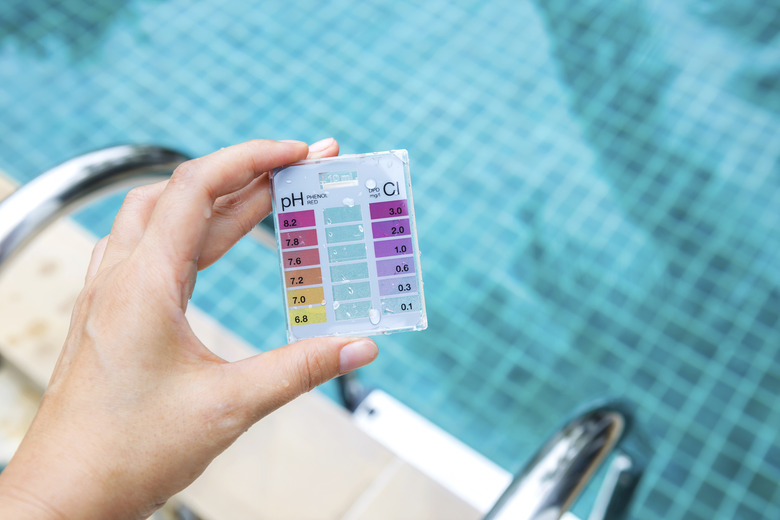Do The Heat & Sun Affect Pool Chlorine?
There's nothing like taking a plunge in a pool on a hot, sunny day. And thanks to chlorine, you usually don't have to worry about whether the water is clean. Chlorine is there to kill algae and bacteria. Without it, the water would be green, cloudy and potentially unhealthy, which is the last thing you want when you're just trying to take a refreshing dip.
How does chlorine kill bacteria exactly? It reacts with the lipids that make up organisms' cell walls and membranes, rupturing and destroying their cells. To keep a pool clean, chlorine needs to be above a certain level, but too much of this chemical can irritate your skin and eyes. Sunlight and heat both affect a pool's chlorine content and must be considered when determining how much to add.
TL;DR (Too Long; Didn't Read)
Yes, sunlight and heat do affect pool chlorine. Ultraviolet rays can reduce chlorine by up to 90 percent in two hours. As for temperature, warmer water tends to breed more bacteria, and so the pool's chlorine gets used up faster and must be replenished more frequently.
Chlorine Content
Chlorine Content
First things first. There are two types of chlorine measured in the pool: free and combined chlorine. Free chlorine is the fraction of the total chlorine that's available to disinfect the water. If free chlorine falls bellow one part per million, the pool is unsafe to swim in. Combined chlorine is the fraction of the total chlorine that has reacted with organic matter, such as algae and bacteria; basically, it's the used chlorine. High levels of combined chlorine can show that there are too many unwanted invaders in the pool, but free chlorine is the component that must be regularly replenished.
The Effects of Light
The Effects of Light
Free chlorine is lost when it reacts with bacteria and other organisms, but also when it's hit by sunlight. Chlorine forms hypochlorite ions, measured as free chlorine, in water. Hypochlorite breaks apart when ultraviolet radiation from the sun hits it, releasing the chlorine as gas into the atmosphere. Sunlight is so effective at reducing chlorine that a bright, sunny day can do so by 90 percent in just two hours. Pool maintenance workers add chlorine daily and use chemical stabilizers to prevent this loss.
The Effects of Temperature
The Effects of Temperature
Temperature indirectly affects chlorine breakdown. Many bacteria species grow better in warmer water. When bacteria proliferate, free chlorine is used up more quickly as it kills them. Here's a general rule of thumb: For every 10 degrees Fahrenheit above 80 degrees Fahrenheit, twice as much chlorine is needed in the pool to maintain an adequate free-chlorine level. This is more important for spas, which are regularly operated at higher temperatures.
Cyanuric Acid
Cyanuric Acid
Added to outdoor pools, cyanuric acid is a chemical that reduces the effects of ultraviolet rays on chlorine. It reacts with free chlorine to form a compound that's stable in the presence of sunlight. The reaction of cyanuric acid can also go the other way and release free chlorine. As free chlorine gets used up, the cyanuric acid provides a reservoir of disinfection potential that's safe from the sun.
Cite This Article
MLA
Becker, Andrea. "Do The Heat & Sun Affect Pool Chlorine?" sciencing.com, https://www.sciencing.com/heat-sun-affect-pool-chlorine-21723/. 24 April 2018.
APA
Becker, Andrea. (2018, April 24). Do The Heat & Sun Affect Pool Chlorine?. sciencing.com. Retrieved from https://www.sciencing.com/heat-sun-affect-pool-chlorine-21723/
Chicago
Becker, Andrea. Do The Heat & Sun Affect Pool Chlorine? last modified March 24, 2022. https://www.sciencing.com/heat-sun-affect-pool-chlorine-21723/
